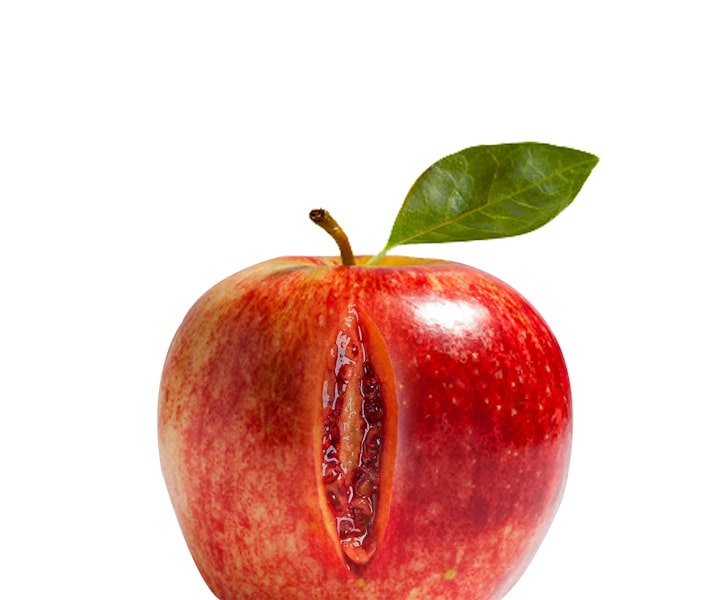In Pursuit of the Designer Vagina
Is sexualized social media and pornography to blame?

Designer vagina – how many of you have not heard of this rather sensational label on a woman’s genitals?
What shocked you more: the label itself or that women and girls, purportedly as young as nine, had expressed keen interest in having the inner and outer folds of their vagina being surgically altered?
Is the designer-vagina trend being driven by sexualized media and easy access to online pornography?
Trending – pursuit of labiaplasty despite being ‘untenable’
ON September 2007, the American College of Obstetricians and Gynecologists (ACOG) issued a strong advice against female genital cosmetic surgery (FGCS), commonly known albeit misleading as designer vagina. ACOG stated that there was no evidence to support the safety and efficacy of such cosmetic procedures, thus making it “untenable”. In the same year, a similar statement was also issued by the UK Royal College of Obstetricians and Gynecologists (RCOG).
This advice coming from well-respected organizations was met, seemingly, with no enthusiasm.
In the UK, The Guardian reported on the result of a study, released in 2009, by the British Journal of Obstetrics and Gynecology. It found an increase of almost 70% in the number of women having FGCS on the NHS, from 669 in 2007 to 1,118 in 2008. There were only 404 such procedures in 2006. In 2010, the leading cosmetic provider in the UK, the Harley Medical Group, received more than 5,000 enquiries for FGCS, 65% of which was for labiaplasty and the rest for tightening of the vagina and reshaping.
By 2018, FGCS was reportedly the fourth most popular cosmetic surgical procedure in the US after liposuction, breast augmentation, and rhinoplasty. In the same year, The American Society for Aesthetic Plastic Surgery (ASAPS) noted that 12,756 labiaplasties were performed. While this number was nowhere near compared with other cosmetic surgeries (e.g. breast augmentation at 329,194), labiaplasties with its 53% increase in five years was considered by ASAPS as “no longer a passing trend”.
Meanwhile, in Australia, the number of labiaplasties done under Medicare increased from 444 annually to 1,605 annually over a 13-year period.
In the UK over a ten-year period, a “fivefold” rise in labiaplasties was noted.
Vagina, vulva and the FGCS
LET’S diverge a bit for important details.
Some of a woman’s sexual organs are inside the body. These are the womb, ovaries and vagina. The external organs, known as the vulva, includes the opening of the vagina. These are the inner and outer lips or labia minora (inner tissues of the female genitalia), labia majora (outer part of the female genitalia) and the clitoris, which is located at the top of the vagina.
FGCS, meanwhile, is the umbrella term for the following procedures:
*G-spot amplification, or G-shot
*Vaginal tightening, often referred to as vaginal rejuvenation
*Hymen reconstruction, or “revirginization”
* Labiaplasty or designer vagina – the most common vulva cosmetic procedure, which includes the following:
- clitoral hood reduction
- repositioning of the glans clitoris
- liposuction of the mons pubis, or “mound of Venus”, or the labia majora
- labia majora augmentation
- reduction of the labia minora
Designer vagina – what was driving the demand
PORNOGRAPHY consumption was the most widely accepted reason for the increased demand for labiaplasty. It was, no doubt, a most sensational if not a most controversial reason.
In 2017, the RCOG and the British Society for Pediatric and Adolescent Gynecology (BritSPAG) issued a joint statement in reply to a BBC report about young women and girls below 18 seeking labiaplasty. Both organizations, expressing deep concern about the report, emphasized that such decisions were “influenced by images in popular culture, by digital media, adverts for cosmetic surgery and pornography”.
In 2019, Fightthenewdrug.org stated that pornography was the “hidden influencer” that was driving teenaged girls to go through this invasive procedure. It added that most researchers and those in the medical profession who were questioning this trend had one finger pointed towards “sexualized media and pornography” as the driver.
The Insider, meanwhile, mentioned the ACOG speculating that “idealized images of genital anatomy” or pornography could be a contributor to the increase in labiaplasties.
As reported by The Guardian much earlier, it was suggested by researchers at King’s College London that the increased exposure of young people to pornographic imagery on the Internet could be driving the rise in surgery rates.
What is wrong with your vagina?
MISCONCEPTIONS about what size [of the labia] is normal appeared to underpin the desire for labiaplasty. This erroneous idealistic body image stemmed not only from exposure to pornography but on sexualized social media, impacting what women and young girls consider as normal.
Dr Paquita de Zulueta, a GP for more than three decades, stated seeing girls in the 11- to 13-year-old bracket expressing concerns about the size and shape of their vulva being wrong, perceiving that the inner lips should be “invisible” – like Barbie’s. This wrong perception, which led them to believe that their vulva was not normal, could be due to lack of awareness that women in pornography might have undergone surgical modification of their labia.

Having noticeable skin folds around the opening of the vagina is completely normal. And experts and authorities are one in stating that “vaginas are individual,” like people. No two are the same. They vary in shape, size and color. A woman’s vagina, therefore, is unique to hers and should not be compared with another woman’s genitalia.
What is really wrong with your vagina?
FOR most women, the size of their labia is generally not a problem.
There are, however, various reasons why the labia become enlarged. This includes ageing, childbirth, genetics and sexual activity. Those with enlarged labia could suffer from urinary tract infections, experience difficulty with exercise, hygiene, sexual and other physical activities. When large labia affect a woman’s work, social and sporting life then the size of the labia becomes a medical problem.
There are perfectly valid reasons that drive women to seek labiaplasty, including the following:
*Reduction in size of big labia
*To repair tears in childbirth
*To remove cancerous tissues if the woman has vulvar cancer
The above medical reasons, unfortunately, were overshadowed by finger-pointing at pornography consumption in the sensational designer-vagina meme.
Is porn to blame?
A study published in the Aesthetic Surgery Journal in its August 2020 issue looked at the influence of pornography on women seeking labiaplasty, in relation to other motivations. A group comprised of patients consulting on labiaplasty participated in the research. Only 11% admitted to being influenced by pornography in seeking labiaplasty. The rest were motivated by their physical symptoms, e.g. tugging with intercourse, twisting of the labia in clothing, discomfort in wearing tight pants.
In a paper on The Rise of Labiaplasty in the West authored by Madita Oeming of the University of Paderborn, she mentioned pornography as a popular reason given for women seeking labiaplasty. However, Oeming disputed the thesis that all women are consumers of pornography, that they viewed the images (of the women in porn) and internalize them as normal, driving them to be dissatisfied with their vulva and seek labiaplasty. She disabused this theory by emphasizing that pornography was used as a “scapegoat” in the rise of labiaplasty. Interestingly, Oeming also noted the role played by labiaplasty providers who, according to her, were the “most aggressive advertisers” for the procedure in the US, UK and Australia.
One other study involving 1,083 participants who were mostly Australians cast doubt on pornography being a predictor on women seeking FGCS. It was stressed, however, that the model was incomplete, and that other predictors should be included in future research.
Another, meanwhile, did not mention pornography as an influencing factor in the increase of FGCS. Instead, the following were highlighted:
Change in grooming practices – in reference to shaving the pubic area, hence, giving attention to the appearance of the vulva
Retouched images of genitalia on social and mainstream media – these do not represent the range of normal female external genitalia, thereby giving a distorted view of normal genitalia
Increased interest in sports – labiaplasty surgeons noted that majority of their patients were physically active, that some did not want their labia peeking through their thongs or being uncomfortable during sexual intercourse or when wearing their yoga pants, or sitting on their bike seat
CONCLUSION
It is tantalizing to attribute the increase in the number of women and young girls seeking “designer vagina” on unrealistic images of female genitalia on pornography. Its influence, however, based on available research materials is not as robust as earlier claimed.
What can be gleaned is the influence of highly-retouched images on social and mainstream media that distort what normal female genitalia looks like.
Women becoming more attuned to their health and the needs of their body that contribute to their well-being and self-esteem are also evident.
So, no, the pursuit of the designer vagina cannot categorically be attributed only to pornography.
* * * * * * * * * * * * *
Thank you for reading this article.
Find me on Facebook, WordPress, LinkedIn, Twitter, Instagram
About the Creator
Josephine Crispin
Writer, editor, and storyteller who reinvented herself and worked in the past 10 years in the media intelligence business, she's finally free to write and share her stories, fiction and non-fiction alike without constraints, to the world.






Comments
There are no comments for this story
Be the first to respond and start the conversation.